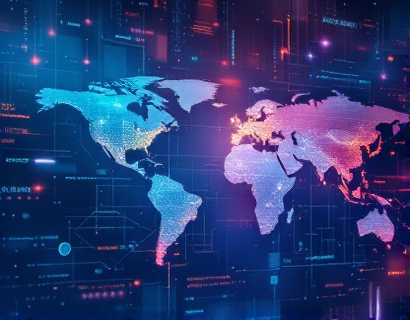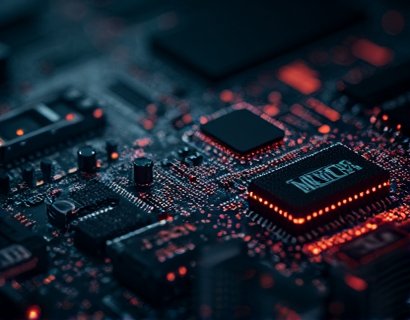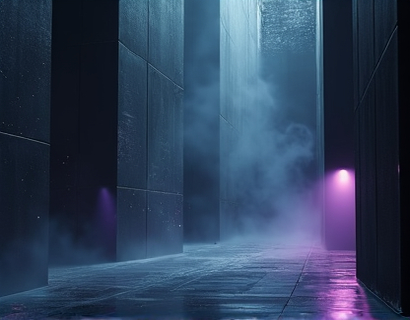Revolutionizing Memorial Creation: The Synergy of AI and Blockchain for Secure and Personalized Online Tributes
The loss of a loved one is one of life's most profound and painful experiences. In the digital age, the need for meaningful and lasting tributes has given rise to innovative solutions that combine the emotional depth of personalized memorials with the security and transparency of blockchain technology. This article explores how a cutting-edge platform, integrating artificial intelligence (AI) and blockchain, is transforming the way we create, manage, and preserve online memorials. These platforms offer a unique and meaningful way to honor memories, ensuring that the legacies of our loved ones endure for generations to come.
The Need for Secure and Personalized Memorials
Bereaved families and individuals often seek ways to create memorials that truly reflect the life and personality of their loved ones. Traditional methods, such as physical monuments or scrapbooks, while meaningful, have limitations in terms of accessibility, preservation, and personalization. Online memorials offer a more dynamic and inclusive alternative, allowing friends and family from around the world to contribute and share memories. However, the digital nature of these tributes raises concerns about security, privacy, and the longevity of the data.
AI and blockchain technology address these concerns by providing robust solutions for creating secure, personalized, and enduring online memorials. AI enhances the user experience by offering intuitive interfaces, personalized content suggestions, and emotional support tools. Blockchain ensures the integrity and permanence of the data, providing a tamper-proof and transparent record of the memorial.
AI-Powered Personalization
AI plays a crucial role in crafting personalized online memorials. The platform uses machine learning algorithms to analyze the life story of the deceased, extracting key events, interests, and relationships. This data is then used to generate a tailored memorial that reflects the unique journey of the individual.
For instance, AI can curate a timeline of significant moments, from birth and milestones to favorite hobbies and achievements. It can also suggest appropriate music, photos, and quotes that resonate with the person's personality. This level of personalization ensures that the memorial is not just a collection of data but a living tribute that captures the essence of the person's life.
Moreover, AI can provide emotional support to those creating the memorial. Grief is a complex and individual experience, and AI-driven chatbots can offer comfort and guidance, helping users navigate the process of memorial creation. These chatbots can provide tips on content creation, suggest ways to involve others in the memorial, and even offer resources for coping with loss.
Blockchain for Security and Transparency
Blockchain technology is renowned for its security and transparency, making it an ideal partner for preserving digital memorials. By using a blockchain-based infrastructure, the platform ensures that the memorial data is stored in a decentralized and immutable ledger. This means that once a memory or contribution is added to the blockchain, it cannot be altered or deleted, providing a permanent and trustworthy record.
The use of blockchain also enhances the security of the memorial. Traditional online platforms are vulnerable to hacking and data breaches, which can compromise sensitive information and personal memories. Blockchain's cryptographic techniques and consensus mechanisms make it extremely difficult for unauthorized parties to access or tamper with the data. This ensures that the memorial remains a safe and private space for loved ones to remember and honor the deceased.
Decentralized Identity and Access Control
One of the key features of the blockchain-based platform is decentralized identity management. Users can create a digital identity that controls access to the memorial, ensuring that only authorized individuals can view or contribute to the tribute. This is achieved through the use of public and private keys, which are unique to each user.
The platform allows users to set specific permissions for different family members or friends. For example, a parent might grant their children access to view and add memories, while restricting the ability to delete content. This level of control ensures that the memorial remains a collaborative yet secure space for shared remembrance.
Community and Social Features
Beyond personalization and security, the platform fosters a sense of community among those creating and visiting memorials. Users can leave messages, share photos, and express condolences, creating a supportive environment for healing and remembrance. AI-driven suggestions can help users find and connect with others who knew the deceased, fostering new relationships and shared memories.
The platform also includes features for live events, such as virtual vigils and anniversary commemorations. These events can be recorded and stored on the blockchain, providing a digital archive of the memorial's evolution over time. AI can assist in organizing these events, suggesting dates, and even generating personalized invitations based on the deceased's preferences.
Preservation and Legacy
The ultimate goal of a digital memorial is to ensure that the legacy of the deceased endures. Blockchain technology plays a crucial role in this aspect by providing a long-term, reliable storage solution. Unlike traditional cloud storage, which can be subject to service interruptions or data loss, blockchain's decentralized nature ensures that the memorial data is preserved indefinitely.
Additionally, the platform can offer options for physical backups, such as QR codes or NFC tags, that link to the blockchain-based memorial. These physical tokens can be passed down through generations, serving as a tangible connection to the past. AI can assist in generating these backups and ensuring they are stored securely.
User Experience and Accessibility
The platform is designed with a user-friendly interface that caters to individuals of all technical backgrounds. AI-powered tools guide users through the memorial creation process, from setting up the initial profile to adding memories and managing permissions. The intuitive design ensures that even those who are not tech-savvy can create a meaningful and visually appealing tribute.
Accessibility is another key consideration. The platform is optimized for various devices, including smartphones and tablets, allowing users to access and update the memorial from anywhere. AI-driven voice recognition and text-to-speech features make the platform usable for individuals with disabilities, ensuring that everyone can participate in the memorial creation process.
Conclusion
The integration of AI and blockchain technology in creating online memorials represents a significant advancement in how we honor and remember our loved ones. This innovative approach not only provides a secure and personalized space for tribute but also ensures that these digital legacies are preserved for future generations. As more families and individuals turn to digital solutions for memorial creation, platforms that leverage the power of AI and blockchain will continue to play a vital role in transforming the way we cope with loss and celebrate life.










































